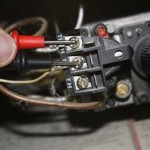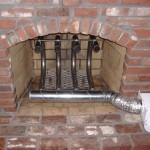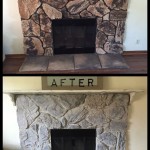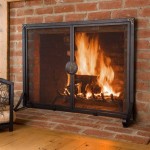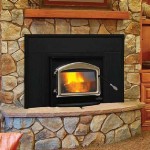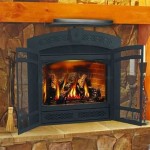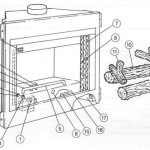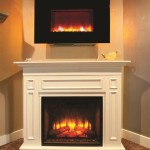Fireplace Conversion to Gas: A Comprehensive Guide
Converting a wood-burning fireplace to gas offers a blend of convenience, efficiency, and environmental benefits. The process involves several crucial steps, from initial assessment and planning to installation and safety checks. This article provides a detailed overview of fireplace conversion to gas, outlining important considerations, steps involved, and potential advantages.
Factors to Consider Before Conversion
Before embarking on a fireplace conversion, a thorough evaluation of existing infrastructure and potential limitations is essential. This assessment helps determine feasibility, cost-effectiveness, and required modifications.
Fireplace Structure Integrity: A qualified professional should inspect the fireplace structure, including the firebox, chimney, and surrounding masonry. Cracks, deterioration, or structural weaknesses can compromise the safety and efficiency of a gas-burning fireplace. Any necessary repairs must be completed before proceeding with the conversion.
Chimney and Venting System: The existing chimney must be suitable for venting gas combustion byproducts. A wood-burning fireplace relies on natural draft, while gas fireplaces may require a specific type of venting, such as a B-vent or direct vent system. Local building codes and manufacturer specifications dictate the appropriate venting requirements.
Gas Line Availability and Capacity: A gas line must be accessible to the fireplace location, and its capacity must be adequate to supply the gas appliance. A licensed plumber or gas technician can assess the existing gas line, determine its capacity, and install a new line if necessary. Insufficient gas supply can lead to inefficient operation and potential safety hazards.
Local Building Codes and Permits: Fireplace conversions are subject to local building codes and regulations, which vary depending on the jurisdiction. Obtaining the necessary permits before commencing the conversion is mandatory. Permits ensure that the installation complies with safety standards and allows for inspections by qualified officials.
Cost Analysis: The cost of converting a fireplace to gas depends on several factors, including the type of gas appliance, the complexity of the installation, and the cost of labor. Obtain quotes from multiple contractors and carefully compare the costs and services offered. Consider the long-term operating costs, such as gas consumption and maintenance, when evaluating the overall cost-effectiveness of the conversion.
Steps Involved in Fireplace Conversion
The fireplace conversion process typically involves several key steps conducted by qualified professionals. Adherence to manufacturer instructions and adherence to local codes is critical throughout this process.
Selection of Gas Appliance: Choose a gas fireplace insert, gas logs, or a standalone gas fireplace that meets heating requirements and aesthetic preferences. Consider the BTU output, efficiency rating, and venting requirements of the appliance. Ensure that the appliance is certified by a reputable testing laboratory, such as UL or CSA.
Preparation of the Fireplace: Remove any grates, andirons, or other accessories from the existing fireplace and clean the firebox thoroughly. Repair any cracks or damage to the firebox lining. Ensure proper sealing to prevent gas leaks.
Gas Line Installation: A licensed plumber or gas technician will run a gas line from the main gas supply to the fireplace location. The gas line must be properly sized and installed according to local codes. A shut-off valve should be installed near the fireplace for easy access in case of emergency.
Venting Installation: Install the appropriate venting system according to the manufacturer's specifications. The venting system must be properly sealed and connected to the chimney or exterior wall. Ensure that the venting system is compatible with the gas appliance and complies with local codes. Incorrect venting can lead to carbon monoxide leaks, which is a serious safety hazard.
Appliance Installation: Carefully follow the manufacturer's instructions for installing the gas fireplace insert, gas logs, or gas fireplace. Ensure that the appliance is properly positioned and secured. Connect the gas line to the appliance and check for leaks using a gas leak detector.
Testing and Inspection: After installation, the gas fireplace must be thoroughly tested to ensure proper operation. The pilot light, burner, and safety controls should be tested. A qualified inspector should inspect the installation to ensure compliance with local codes and regulations. Any issues identified during testing or inspection must be addressed immediately.
Advantages of Gas Fireplace Conversion
Converting to a gas fireplace provides several benefits over traditional wood-burning fireplaces. These benefits relate to convenience, efficiency, and environmental factors.
Convenience: Gas fireplaces offer unparalleled convenience compared to wood-burning fireplaces. They eliminate the need to purchase, store, and transport firewood. Starting a gas fireplace is as simple as flipping a switch or pressing a button. Gas fireplaces also produce consistent heat without requiring constant tending.
Efficiency: Gas fireplaces are generally more energy-efficient than wood-burning fireplaces. They convert a higher percentage of fuel into usable heat. Some gas fireplaces have high-efficiency ratings and can significantly reduce heating costs. Additionally, gas fireplaces can be easily controlled with thermostats or remote controls, allowing for precise temperature adjustments.
Environmental Benefits: Gas fireplaces produce significantly fewer emissions than wood-burning fireplaces. They release less particulate matter, carbon monoxide, and other pollutants into the atmosphere. Converting to a gas fireplace can improve indoor air quality and reduce the environmental impact of home heating. Furthermore, natural gas is a relatively clean-burning fuel compared to wood.
Safety: Gas fireplaces offer enhanced safety features compared to wood-burning fireplaces. They typically include safety controls that shut off the gas supply in case of a malfunction or gas leak. Gas fireplaces do not produce sparks or embers, reducing the risk of fire hazards. However, it is important to properly maintain gas fireplaces and have them inspected regularly by a qualified technician.
Aesthetics: Gas fireplaces are available in a wide variety of styles and designs, ranging from traditional to contemporary. They can be customized to match any décor and enhance the aesthetic appeal of a room. Gas logs can closely mimic the appearance of real wood, providing a realistic flame and ambiance.
Reduced Maintenance: Gas fireplaces require less maintenance than wood-burning fireplaces. There is no need to clean up ashes or soot. The chimney needs to be inspected and cleaned periodically, but the frequency is typically less than that of a wood-burning fireplace. Regular maintenance, such as cleaning the burner and checking the venting system, is essential for ensuring safe and efficient operation.
In conclusion, fireplace conversion to gas can be a worthwhile investment for homeowners seeking a convenient, efficient, and environmentally friendly heating solution. However, carefully consider all factors, including the fireplace structure, venting system, gas line availability, and local building codes, before proceeding with the conversion. Engaging with qualified professionals and adhering to safety standards is crucial to ensure a successful and safe installation.
Converting A Wood Burning Fireplace Into Gas Heat Glo
Can I Convert My Wood Burning Fireplace To Gas Woodlanddirect Com

Convert From Wood To Gas With A Insert The Kernel Burner

Wood To Gas Fireplace Conversion In Wisconsin Free Quote Badgerland Waesha

Wood Fireplaces Gas Conversion That Counts

Convert Your Wood Burning Fireplace To Propane Ny
Can I Convert My Wood Burning Fireplace To Gas Woodlanddirect Com

Wood Burner Conversion New Jersey Fireplaces Kjb

Gas To Wood Fireplace Conversion Overland Park Ks Firplace Service

Converting Wood Fireplace To Gas Valparaiso In Northwest Chimney
Related Posts

